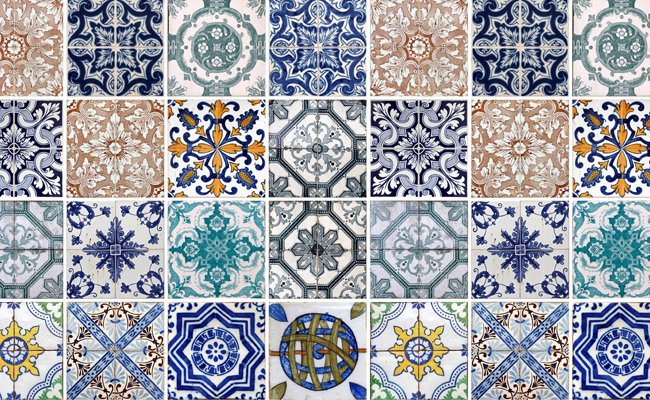Portugal is one of the rare European countries that adopted the legacy of the Moors. They put it into stunning use over the centuries. And you can now see it out on the streets in the form of Azulejo. The term stands for hand-painted tiles and there are exquisite displays covering walls all over the countries. You can find Azulejo on train stations, buildings, even churches.
This type of art also made it in other countries. Portuguese and Spanish colonies in South and North America also practice the art of Azulejo. These tiles are a major aspect of Portuguese architecture to this day. And some of them chronicle major historical and cultural aspects of Portuguese history.
![]()
History of the Azulejo Art
The word Azulejo comes from the Arab word “azzelij” or “al zuleycha”. It means small polished stones and refers to a ceramic piece, usually squared and one side glazed. It is an identity art of Portugal. Azulejo was used through the past five centuries.
In Portugal, tiled pavements, made of geometrical pieces of plain colors were used since the 13th century. Moros brought Azulejo to the Iberian Peninsula, and the influence in Portugal came from Spain in the 15th century. King Manuel I visited Seville where he saw the tiles and brought the idea to Portugal. In accordance to Islamic law, the first tiles portrayed no human figures, only geometric patterns.
He used the first tiles from Seville to cover up large areas of blank walls, common inside buildings during the Gothic period.
During the 16th century, as Portugal got liberated from the Moros, the motifs changed. Gone were the Moros and the Islamic motifs. Portugal welcomed European motifs with Gothic and Renaissance references. But the use of Hispanic-Moorish techniques prevailed and endured.
At this point, azulejos were decorated in a simple color palate, dominated by blues and whites. But by the time the Age of Discoveries came, the colors changed. They were more prominent and some considered them fashionable. Yellow, gold, and even green colors started to appear on the tiles.
After the Earthquake of 1755 which destroyed most of Lisbon, there was a shift from Portuguese-Gothic style to Pombaline style. And during the last few centuries, the use of azulejos exploded.
Today, you can see them in decorating churches, monasteries, restaurants, bars, railways, subway stations, palaces, and even in regular homes. And the moment you step foot on Lisbon airport, you will be welcomed by azulejos.
At the start of the 20th century, Art Nouveau azulejos appeared by artists such as Jose Antonio Jorge Pinto, Julio Cesar da Silva, and more. Artists started using azulejos for storytelling purposes. For example, the Sao Bento railway station in Porto, show historical themes in the narrative style of the romantic picture-postcard. It is one of the most notable creations with azulejos of the 20th century.
![]()
Can you see them elsewhere?
Portugal is not the only country where azulejos are a form of art. Basically, most Spanish and Portuguese colonies adopted the art as well. For example, in the Philippines, the tradition survives on staircases. The Philippines are a former Spanish colony.
Other countries where you can see azulejos include Canada, Uruguay, Macau, Peru, Brazil, and some cities in Mexico.
Fun Facts
- Portuguese painters weaned themselves off ornamental decoration and employed human or animal figures in the design
- After the earthquake in 1755 in Lisbon, facades with the tiles were the ones better preserved
- Alfama is one of the best places to see the beautiful Portuguese heritage of tiles
- In the beginning, they were mostly blue and white because Europeans were fascinated with the elegance and fine touch of Chinese porcelain
- Because of the many imports from abroad, Portuguese gave rise to a remarkable movement, Ciclo dos Mestres, or cycle of masters. These people were renowned painters that designed the walls with azulejo, giving them the status of artists
- In the beginning, the waterproof glazed surface of tiles protected the walls of the house from damp and low temperatures. They served as an insulation method. This is why they made it into wet areas such as bathrooms and kitchens
- Azulejos or decorative tiles are the oldest form of comic books in Portugal as churches used them as a way to tell stories about saints and biblical moments
- Sant’Anna is the oldest tile factory in Portugal and it still operates. It survived the great earthquake in Lisbon
- After the great earthquake, tiles with repetitive geometric patterns were used instead of ordering original art works to make it fast and cheap
- Tiles after the earthquake became known as Pombalinos, a reference to Marques de Pombal, the person who reconstructed Lisbon after the earthquake
- Tiles have been used in Portugal for more than 500 years without interruption, making the country the World Tile Capital



